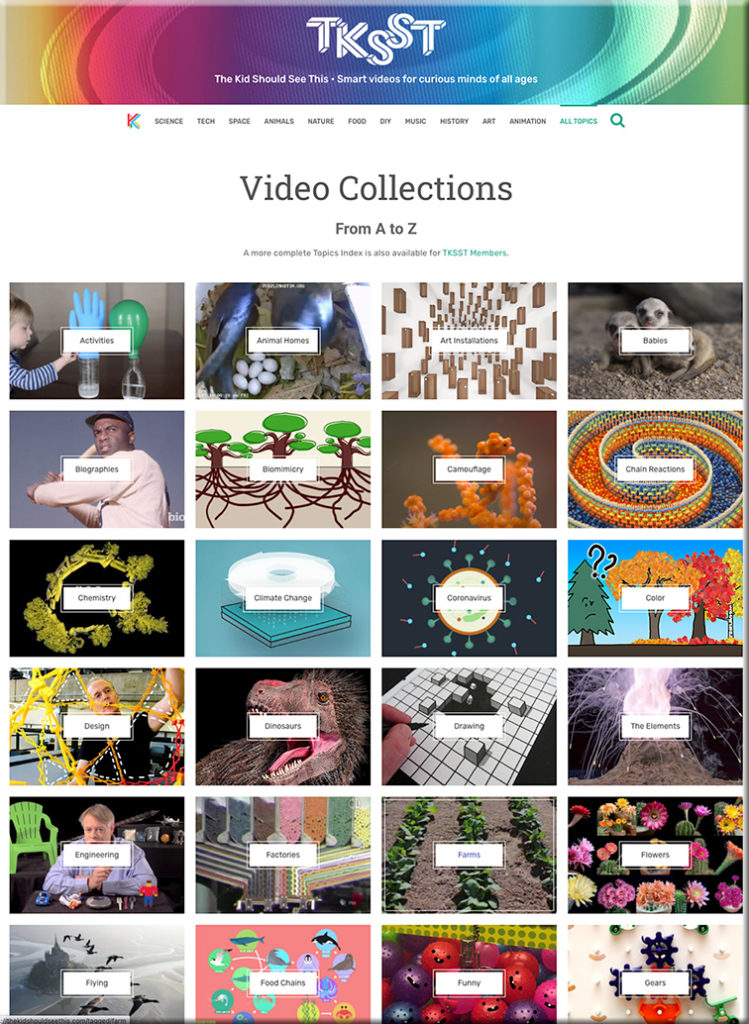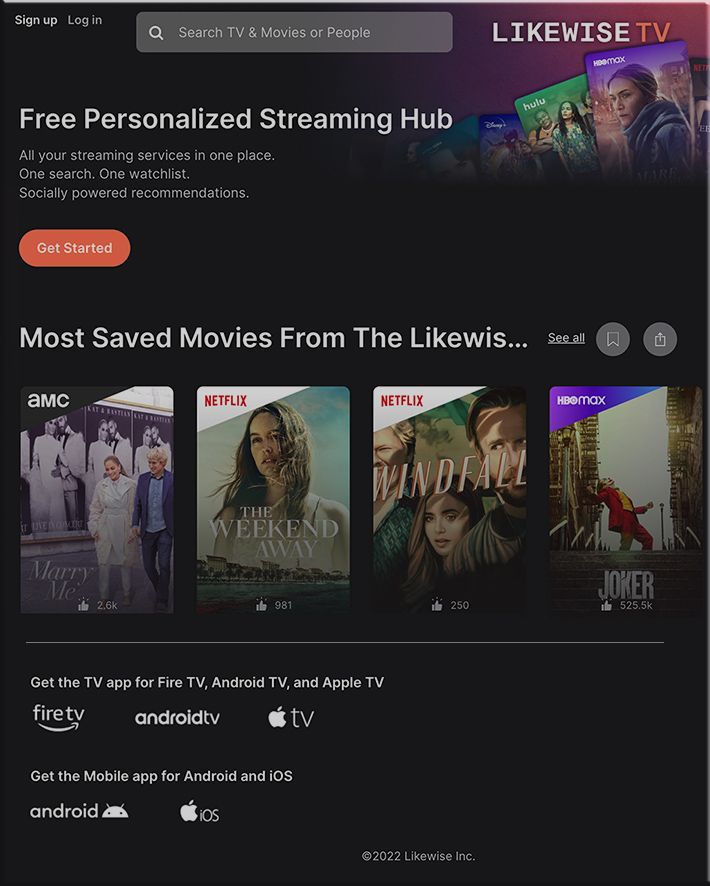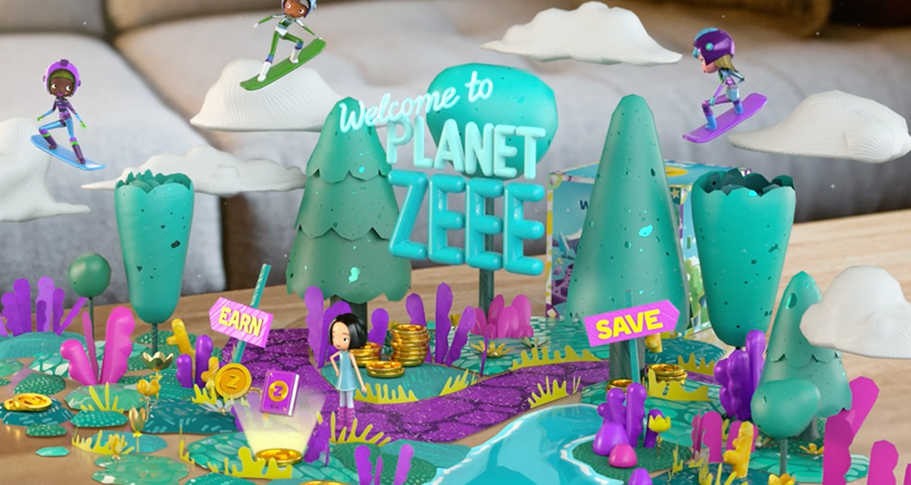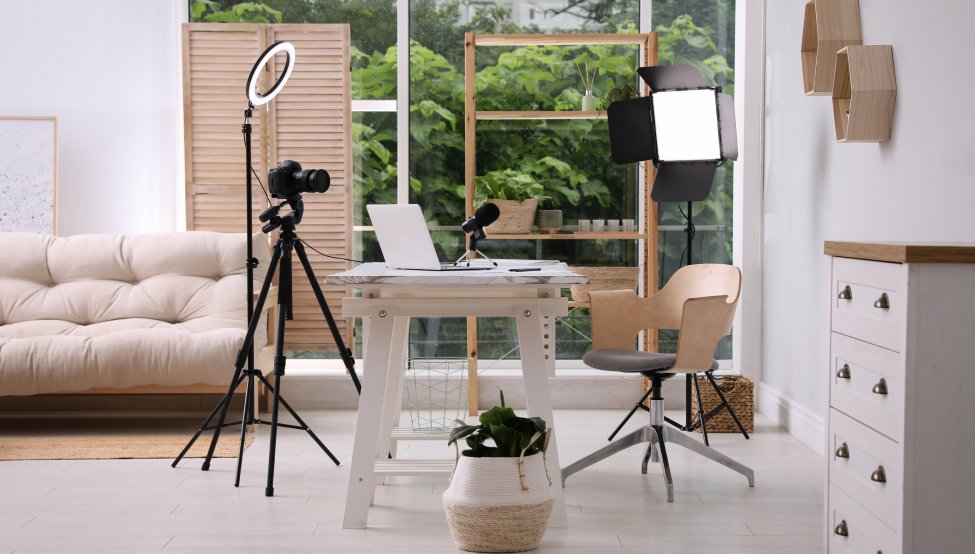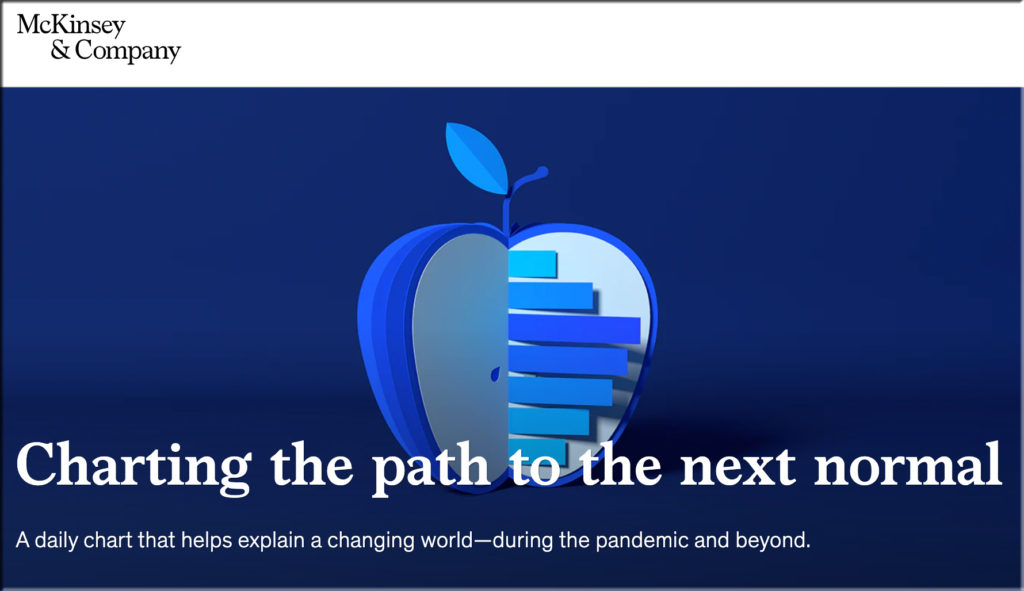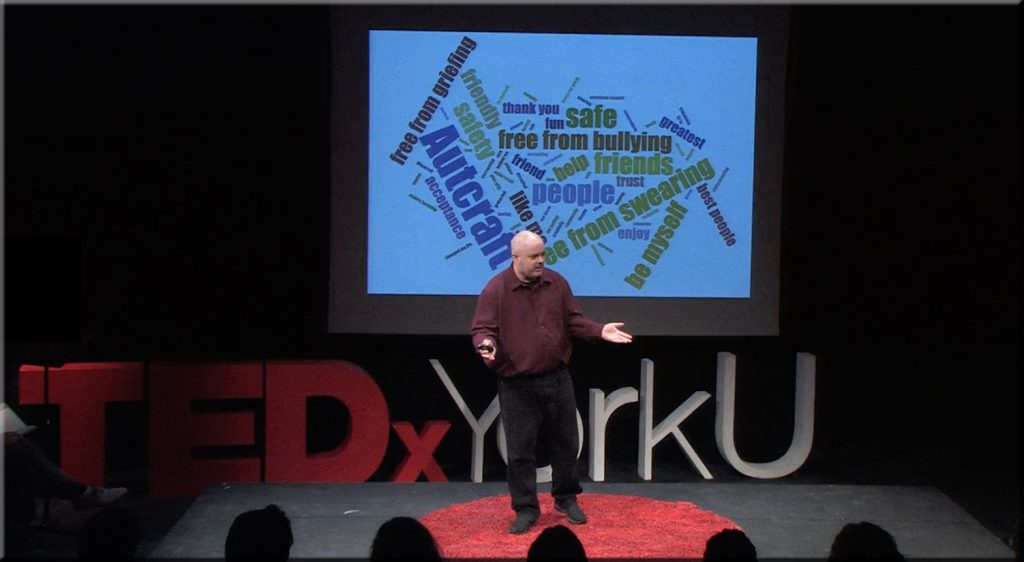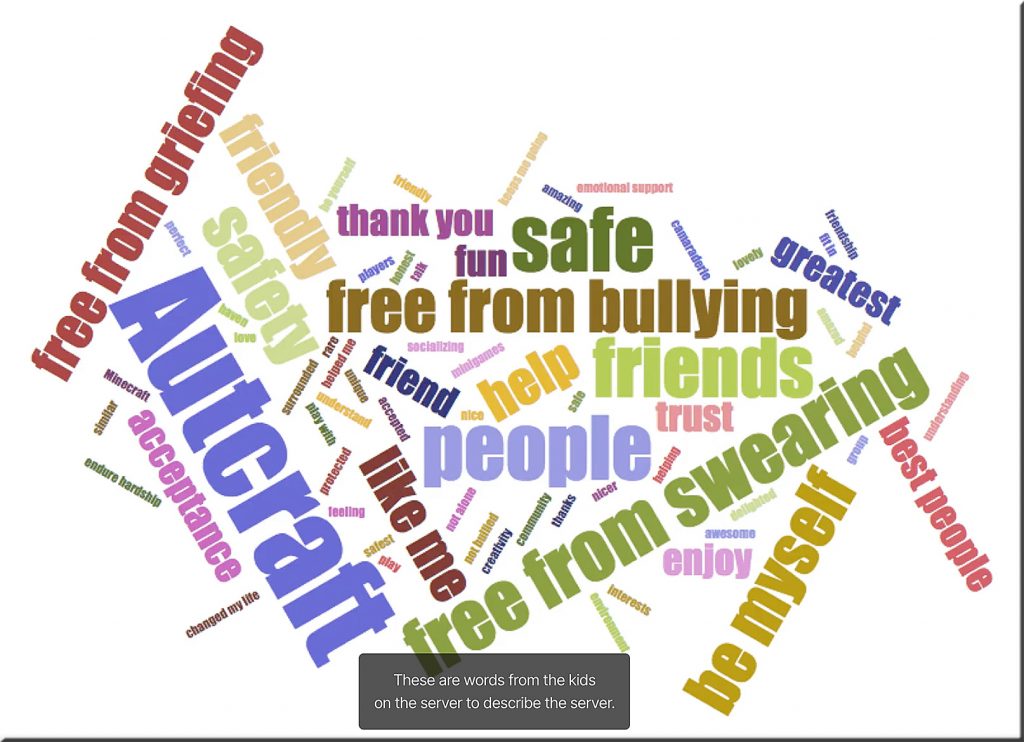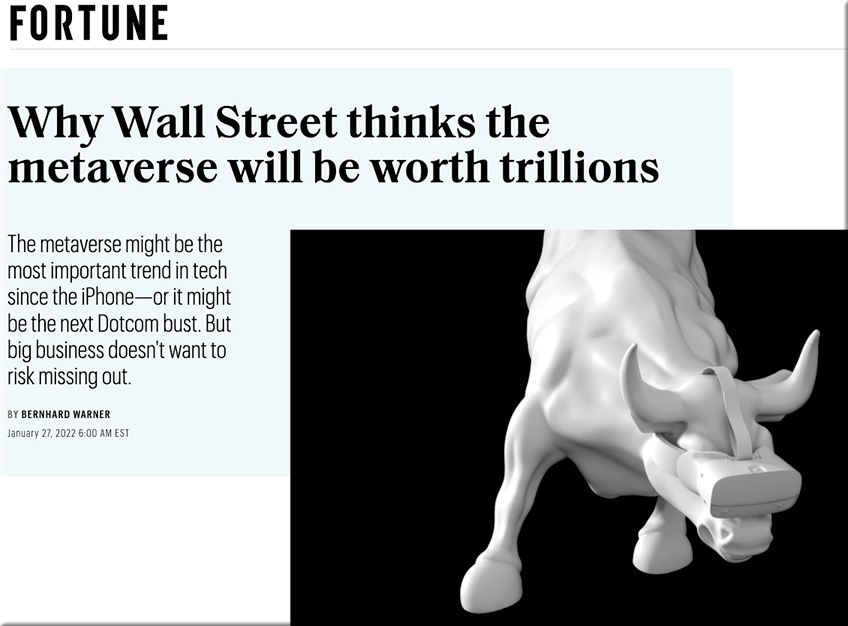TKSST: The Kid Should See This | Smart videos for curious minds of all ages
Likewise TV Brings Curation to Streaming — from lifewire.com by Cesar Aroldo-Cadenas
And it’s available on iOS, Android, and some smart TVs
All your streaming services in one place. One search. One watchlist. Socially powered recommendations.
Entertainment startup Likewise has launched a new recommendations hub that pulls from all the different streaming platforms to give you personalized picks.
…
Likewise TV is a streaming hub powered by machine learning, people from the Likewise community, and other streaming services. The service aims to do away with mindlessly scrolling through a menu, looking for something to watch, or jumping from one app to another by providing a single location for recommendations.
…
Note that Likewise TV is purely an aggregator.
Also see:
From DSC:
Now we need this type of AI-based recommendation engine, aggregator, and service for learning-related resources!
I realize that we have a long ways to go here — as a friend/former colleague of mine just reminded me that these recommendation engines often miss the mark. I’m just hoping that a recommendation engine like this could ingest our cloud-based learner profiles and our current goals and then present some promising learning-related possibilities for us. Especially if the following graphic is or will be the case in the future:
Here’s what I’ve learned about building skills and how skills shape your career.
A visual thread (1/11) ?1. Degrees don’t age well. Your current skills and skill level tell organizations more about your real value. pic.twitter.com/Z1edxrYAB1
— Jeff Kortenbosch ?? (@jeffkortenbosch) March 13, 2022
Also relevant/see:
- Samsung’s New M8 Monitor Combines Entertainment and Work — from lifewire.com by Cesar Cadenas
From DSC:
Some interesting/noteworthy features:
- “The 32- inch display has Wi-Fi capabilities to supports multiple streaming services, can stream smartphone content, and comes with a removable SlimFit Cam.”
- The M8 has Wi-Fi connectivity for its native streaming apps so you won’t have to connect to a computer to watch something on Netflix. And its Far Field Voice mic can be used w/ the Always On feature to control devices like Amazon Alexa with your voice, even if the monitor is off.
- “You can also connect devices to the monitor via the SmartThings Hub, which can be tracked with the official SmartThings app.”
I wonder how what we call the TV (or television) will continue to morph in the future.
Addendum on 3/31/22 from DSC:
Perhaps people will co-create their learning playlists…as is now possible with Spotify’s “Blend” feature:
Today’s Blend update allows you to share your personal Spotify playlists with your entire group chat—up to 10 users. You can manually invite these friends and family members to join you from in the app, then Spotify will create a playlist for you all to listen to using a mixture of everyone’s music preferences. Spotify will also create a special share card that everyone in the group can use to save and share the created playlist in the future.
From DSC:
Christin Bohnke raises a great and timely question out at edsurge.com in her article entitled:
Do We Really Want Academic Permanent Records to Live Forever on Blockchain?
Christin does a wonderful job of addressing the possibilities — but also the challenges — of using blockchain for educational/learning-related applications. She makes a great point that the time to look at this carefully is now:
Yet as much as unchangeable education records offer new chances, they also create new challenges. Setting personal and academic information in stone may actually counter the mission of education to help people evolve over time. The time to assess the benefits and drawbacks of blockchain technology is right now, before adoption in schools and universities is widespread.
As Christin mentions, blockchain technology can be used to store more than formal certification data. It could also store such informal certification data such as “research experience, individual projects and skills, mentoring or online learning.”
The keeping of extensive records via blockchain certainly raises numerous questions. Below are a few that come to my mind:
- Will this type of record-keeping help or hurt in terms of career development and moving to a different job?
- Will — or should — CMS/LMS vendors enable this type of feature/service in their products?
- Should credentials from the following sources be considered relevant?
- Microlearning-based streams of content
- Data from open courseware/courses
- Learning that we do via our Personal Learning Networks (PLNs) and social networks
- Learning that we get from alternatives such as bootcamps, coding schools, etc.
- Will the keeping of records impact the enjoyment of learning — or vice versa? Or will it depend upon the person?
- Will there be more choice, more control — or less so?
- To what (granular) level of competency-based education should we go? Or from project-based learning?
- Could instructional designers access learners’ profiles to provide more personalized learning experiences?
- …and I’m certain there are more questions than these.
All that said…
To me, the answers to these questions — and likely other questions as well — lie in:
- Giving a person a chance to learn, practice, and then demonstrate the required skills (regardless of the data the potential employer has access to)
. - Giving each user the right to own their own data — and to release it as they see fit. Each person should have the capability of managing their own information/data without having to have the skills of a software engineer or a database administrator. When something is written to a blockchain, there would be a field for who owns — and can administer — the data.
In the case of finding a good fit/job, a person could use a standardized interface to generate a URL that is sent out to a potential employer. That URL would be good for X days. The URL gives the potential employer the right to access whatever data has been made available to them. It could be full access, in which case the employer is able to run their own queries/searches on the data. Or the learner could restrict the potential employer’s reach to a more limited subset of data.
Visually, speaking:

I still have a lot more thinking to do about this, but that’s where I’m at as of today. Have a good one all!
Revisiting Camera Use in Live Remote Teaching: Considerations for Learning and Equity — from er.educause.edu by Patricia Turner
Excerpts:
Given the need to balance equity concerns with effective teaching practices, the following suggestions might be helpful in articulating an approach to using cameras in live remote teaching sessions. This list is not exhaustive; these suggestions are offered as a starting point from which to begin thinking about this issue.
…
Given what we know from research about interaction, active learning, equity, and inclusion, one possible philosophy is this: if we believe that some students are not using a camera because of privacy issues, because they lack a quiet space in which to learn, or because of inequitable circumstances, we can let our students know that we are available if they need help and that, although we can’t solve all problems, we may be able to help students get the support and resources they need.
This Hilarious AR App Teaches Kids Financial Responsibility — from vrscout.com by Bobby Carlton
Excerpts:
Adventures with Zeee Bucks is a mobile AR experience that is designed to help youngsters sharpen their financial skills by earning and saving Zeee bucks, and even help them save real money.
…
You can download the app today for free on the iOS and Android stores.
The Metaverse Will Radically Change Content Creation Forever — from forbes.com by Falon Fatemi
Excerpt:
Although the metaverse promises to touch nearly every person in our society, there’s one demographic that will almost certainly see disproportionately strong disruption: creators. The metaverse has the potential to fundamentally disrupt the content creation process.
The metaverse is slated to help creators make more interactive and immersive content, thanks in large part to advances in VR and AR. The stakes will be raised as creators will be expected to build more immersive and interactive content than ever before.
Also related/see:
The Amazing Possibilities Of Healthcare In The Metaverse — from forbes.com by Bernard Marr
Excerpts:
What’s generally agreed on, however, is that it’s effectively the next version of the internet – one that will take advantage of artificial intelligence (AI), augmented reality (AR), virtual reality (VR), and ever-increasing connectivity (for example, 5G networks) to create online environments that are more immersive, experiential and interactive than what we have today.
Metaverse involves the convergence of three major technological trends, which all have the potential to impact healthcare individually. Together, though, they could create entirely new channels for delivering care that have the potential to lower costs and vastly improve patient outcomes. These are telepresence (allowing people to be together virtually, even while we’re apart physically), digital twinning, and blockchain (and its ability to let us create a distributed internet).
From DSC:
That last paragraph could likely apply to our future learning ecosystems as well. Lower costs. A greater sense of presence. Getting paid for one’s teaching…then going to learn something new and paying someone else for that new training/education.

AI Could Power the Next Generation of Smart Glasses — from lifewire.com by Mayank Sharma. I’d like to thank Mayank for letting me contribute some thoughts to this article.
Making the bigger picture clearer
Key Takeaways
- Biel Glasses has created a pair of smart glasses to enhance the mobility of users with low vision.
- Experts believe smart glasses will soon outpace VR headsets in terms of adoption and use.
- This new generation of smart glasses will infuse AI together with AR to give users a new and better perspective.
The best lighting for video conferencing, according to experts— from blog.webex.com
Contents:
- What is the best lighting for video conferencing?
- Where should the light be for a video call?
- What kind of lighting is best for video meetings?
- What are the best lighting products for a video conference?
- What is the best lighting for video conferencing on-the-go?
- Good lighting means good communication:
The doctor is in—the video call — from mckinsey.com
Excerpt:
More patients than ever were willing to try virtual health services after COVID-19 emerged. Last year, the use of telehealth care was 38 times higher than prepandemic levels, as appointments such as follow-ups could easily be delivered remotely. A recent McKinsey survey shows that up to $265 billion in Medicare spending could shift to patients’ homes by 2025, with greater physician participation in the transition from telehealth to at-home care.
From facility to home: How healthcare could shift by 2025 — from mckinsey.com by Oleg Bestsennyy, Michelle Chmielewski, Anne Koffel, and Amit Shah
Also see the other charts via their daily chart feature:
Using Telehealth to Expand Student Access to Care — from techlearning.com by Erik Ofgang
Renee Kotsopoulo, director of health services for the Garland ISD in Texas, helped bring telehealth to her students and believes technology can help keep kids healthy and in school.
Can Teletherapy Companies Ease the Campus Mental-Health Crisis? — from chronicle.com by Kate Hidalgo Bellows
From DSC:
Telehealth has been booming during the pandemic. I think telelegal will ride on the coattails of telehealth.
Storytelling for impact — from nationalgeographic.org; a collaboration between National Geographic and Adobe
Visualize and communicate powerful stories that inspire change
Excerpt:
Stories can change the world.
Learn from world-class National Geographic photographers, videographers, and visual designers in a series of Storytelling for Impact online courses. Created in partnership with Adobe, this series will teach you how to use compelling photography, video, graphics, and audio to tell stories in the most impactful ways to inspire change.
Offered for both educators and youth ages 16–25, these short, free, self-paced online courses are designed to guide learners to visualize and communicate powerful stories that inspire action.
Ready to harness the power of storytelling?
Holograms? Check! Now what? — from blog.webex.com by Elizabeth Bieniek
Excerpt (emphasis DSC):
Two years ago, I wrote about the Future of Meetings in 2030 and hinted at an effort my team was building to make this a reality. Now, we have publicly unveiled Webex Hologram and brought the reality of a real-time, end-to-end holographic meeting solution to life.
With Webex Hologram, you can feel co-located with a colleague who is thousands of miles away. You can share real objects in incredible multi-dimensional detail and collaborate on 3D content to show perspective, share, and approve design changes in real-time, all from the comfort of your home workspace.
As the hype dies down, the focus on entirely virtual experiences in fanciful environments will abate and a resurgence in focus on augmented experiences—interjecting virtual content into the physical world around you for an enhanced experience that blends the best of physical and virtual—will emerge.
The ability to have curated information at one’s fingertips, still holds an incredible value prop that has yet to be realized. Applying AI to predict, find, and present this type of augmented information in both 2D and 3D formats will become incredibly useful.
From DSC:
As I think of some of the categories that this posting about establishing a new kind of co-presence relates to, there are many relevant ones:
- 21st century
- 24x7x365
- 3D
- Audio/Visual (A/V)
- Artificial Intelligence (AI)
- Cloud-based
- Collaboration/web-based collaboration
- Intelligent tutoring
- Law schools, legal, government
- Learning, learning agents, learning ecosystems, Learning from the Living [Class] Room, learning spaces/hubs/pods
- Libraries/librarians
- K-12, higher education, corporate training
- Metaverse
- Online learning
- Telelegal, telemedicine
- Videoconferencing
- Virtual courts, virtual tutoring, virtual field trips
- Web3
How I use Minecraft to help kids with autism — from ted.com by Stuart Duncan; with thanks to Dr. Kate Christian for this resource
Description:
The internet can be an ugly place, but you won’t find bullies or trolls on Stuart Duncan’s Minecraft server, AutCraft. Designed for children with autism and their families, AutCraft creates a safe online environment for play and self-expression for kids who sometimes behave a bit differently than their peers (and who might be singled out elsewhere). Learn more about one of the best places on the internet with this heartwarming talk.
Below are two excerpted snapshots from Stuart’s presentation:
Exploring Virtual Reality [VR] learning experiences in the classroom — from blog.neolms.com by Rachelle Dene Poth
Excerpt:
With the start of a new year, it is always a great time to explore new ideas or try some new methods that may be a bit different from what we have traditionally done. I always think it is a great opportunity to stretch ourselves professionally, especially after a break or during the spring months.
Finding ways to boost student engagement is important, and what I have found is that by using tools like Augmented Reality (AR) and Virtual Reality (VR), we can immerse students in unique and personalized learning experiences. The use of augmented and virtual reality has increased in K-12 and Higher Ed, especially during the past two years, as educators have sought new ways to facilitate learning and give students the chance to connect more with the content. The use of these technologies is increasing in the workplace, as well.
With all of these technologies, we now have endless opportunities to take learning beyond what has been a confined classroom “space” and access the entire world with the right devices.
Why Wall Street thinks the metaverse will be worth trillions — from fortune.com by Bernhard Warner; resource from Ori Inbar on Twitter
Also from Ori Inbar:
- China’s Big Tech leads in VR and AR patent applications. But China’s metaverse may look different from everyone else’s — from fortune.com by Yvonne Lau









